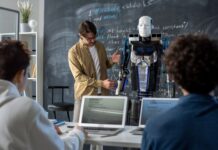In my line of work, I’m often asked what the is difference between a business process outsourcer (BPO) and a knowledge process outsourcer (KPO)? So much of that comes down to technology and when applying digital tools to outsources services makes most sense.
One key distinction is that BPOs focus more on simple automation of repetitive tasks. Some BPOs will rely on human capital to perform these tasks, while others invest in robotic process automation (RPA) to speed things up.
KPOs differ from BPOs in that they provide their customer base with much deeper domain expertise and a much higher-value level of analysis.
Unlike BPOs’ reliance on RPA, which closely follows the “if this, then that” approach, KPOs need to deploy more sophisticated digital solutions to support their teams of analysts.
Good foundational machine learning
This is where machine learning (ML) comes in. The best ML projects always start by defining a clear hypothesis and then researching the approach with a data science team. Key questions that any CDO and their teams should be asking include the following: Are we able to find training data for our model? Do we believe off-the-shelf techniques can yield results, or do we need to build bespoke models? When will applying digital tools to outsources services benefit the business?
The range of document-based analysis that KPOs provide varies widely and includes pre-analysis, pre-preparatory tasks such as summarising content, evaluating relevance, transposing information from one document to another, detecting early warning signals, evaluating sentiment, determining meaning or translating documents from one language to another.
As client demands and volumes of work have accelerated, especially during the COVID-19 pandemic, KPOs need to focus on how best to deploy ML to underpin digital service platforms.
How does machine learning work in a live environment, though?
Well, let me take you through an example. As part of a bank’s lending process, there is a robust evaluation of risk. Traditionally, the process of evaluating risk has been derived by taking the information provided in the company’s accounts and importing that into a risk model. Despite the accounting standards, there is significant variability in what accounting line items are called. This makes it nearly impossible for anyone but an SME to successfully transpose information from filing to model.
The academic problem is two-fold:
- Despite advances in OCR technology, computers still find it much harder to read documents than we humans do. Basic things such as identifying characters when they are covered with a company stamp or a spill of coffee are hard. We humans also understand tables of information irrespective of whether those tables are represented with bold lines or whether they are absent of structure and are simply implied through spacing.
This is still hard for computers to do.
While the leading commercially available OCR software does a good job, leading KPOs are deploying their own proprietary OCR models in conjunction with standard OCR installations to provide far greater accuracy. - Although the field of ML has been around for a long time, advances in technology over the past five years have really accelerated its adoption and implementation. These days, it is not so much about whether the technology will be able to run the model but much more about the academic data science challenges around finding data and managing data to train and test models.
Final thoughts
What is necessary to ensure the continued development and successful deployment of this and other digital innovations is skill and patience in equal measure. One small positive from the otherwise saddening COVID-19 experience is that everyone in both the technology and financial services sectors has proven the capacity for remote working at scale.
For KPOs and financial services firms with global operations and big tech demands, this now means we can broaden our horizons when it comes to finding and nurturing the human talent needed to drive digital platform innovation forward. The machines may have already arrived but, as with KPOs, it is people who remain at the core when applying digital tools.















